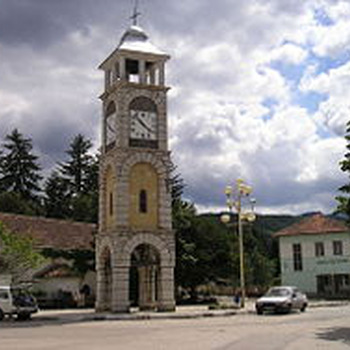Baba Vida Fortress
Overview
"Baba Vida", also called "Babini Vidini towers", is the only fully preserved medieval castle in Bulgaria, which played both the role of a defensive facility and a ruler's castle. It is located on the banks of the Danube River in the northeastern part of Vidin.
The names by which the fortress is known today come from a legend about the sisters Vida, Kula and Gamza, who inherited a local ruler. Vida, the largest, built the castle, which was named after her "Babini Vidini towers" and abbreviated "Baba Vida". The castle was built on part of the ancient Roman fortress of Bononia, built for the local garrison in the second century, turned into a small town (occupying an area of about 20 hectares). The foundation of the eastern corner tower is best preserved from the city fortress of Bononia. Later, the castle (approx. 5 decares) was built on its foundations by the river, which became the main, most fortified part of the even larger Vidin fortress established in the 16th century, whose walls surrounded the then town (the oldest today). Vidin district Kaleto). The first construction activities on the fortress date back to the end of the First Bulgarian Kingdom. The construction of the real fortress began in the tenth century. Byzantine chronicles show that the Vidin fortress withstood an 8-month siege in 1003 by Byzantine troops led by Emperor Basil II. The Byzantines still enter, but with bribes and deception. There are relatively few buildings left from that period today. The best preserved are the wall and towers, which are located on the Danube River. For almost the entire period of the Second Bulgarian Kingdom the fortress was the most important fortification in Northwestern Bulgaria. The largest extension of the fortress was under Tsar Ivan Sratsimir, who ruled the Vidin kingdom, used it as a feudal castle. During its period, internal walls and towers were built. It was then that the fortress acquired a look close to what it has today. The foundations of a chapel from the 13th to the 14th century have been discovered. Among the bone remains from the VIII - XVII century paleoornithologist Prof. Zlatozar Boev identified 7 species of birds, including the long-extinct capercaillie (Tetrao urogallus) and gray crane (Grus grus). Of interest are the discovered remains of a domestic turkey (Meleagris gallopavo f. Domestica), which are among the earliest in the country. After the 18th century, the Baba Vida fortress was no longer used for defensive purposes, but served mainly as an arms depot and prison. The gallows of the prison is preserved in a niche at the southern corner of the fortress. Baba Vida is a fortress-museum, open to the public since 1958, a cultural monument of national importance since 1964, on the list of the Hundred National Tourist Sites. The museum preserves and presents finds and information about the history of the castle. Restorations in the museum recreate the former atmosphere in the fortress. In the passage between the southeastern outer and inner walls on the Danube side, a stage for a summer theater with 350 seats has been built, where the Vidin Theater Days festival is held. Art exhibitions are held, most often in the yard. The fortress is the main tourist attraction of Vidin.
Recommended
- Cross Barracks Museum
- Hadjiangel's house - Vidin
- "The Monument of Freedom"
- Vidin Regional History Museum
- Osman Pazvantoglu Mosque, Vidin


 Bulgarian
Bulgarian Romanian
Romanian

